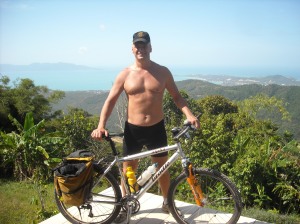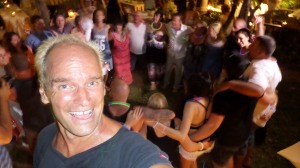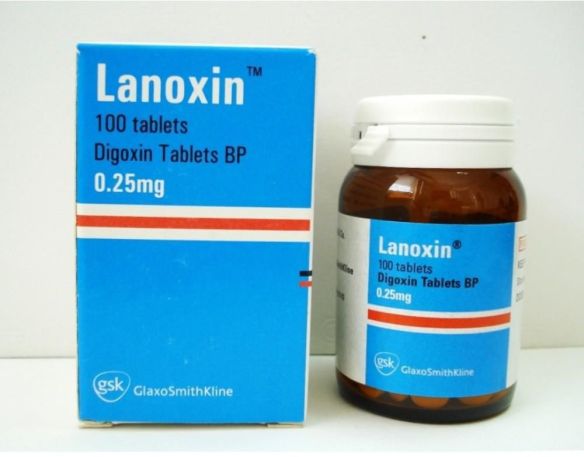This is Joe’s Story – a guest blog article based on Joe’s comment on this blog describing his fascinating experience with atrial fibrillation and subsequent heart failure. Joe has really demonstrated persistence and a positive attitude that, I think, a lot of athlete’s with atrial fibrillation possess. Joe is making a comeback from serious, life-threatening heart failure, and he has done a good job of accepting the new reality of his post a fib performance.
+++++++++++++++++++++++++++++++++++++++++++++

Joe Triumphant
Hi Everyone – I’ve had A-Fib for about three years now.
I live in the tropics and cycle, run, do weights. I train five days a week but not hard or too easy. I believe I got into this mess when I cycled up our small mountain here on the island I live on three times a week back then. I would only drink reverse osmosis cleaned water consuming about four liters just going up the mountain. I’d do weights in the morning and cycle in the afternoon and believe me it gets hot and humid. It’d take me about two hours to cycle up to the top of this very very steep course. (approximately 5K to the top)
In hindsight now I guess I’d been over-training terribly and not putting back potassium and minerals into my body at all. I happened by luck (or fate) to be given a heart monitor and thought it was cool to use it on my cycle ride up the mountain. I set the max at 185 and started off – as soon as I started up the steep hill after a five kilometer preamble the damn thing started beeping – it was at 205 and I just started up the hill! Like an idiot (ha ha) I kept going and it would not shut up. Did it the whole way up and for the next month it was like that. Can’t believe it now I did that but as I’m in constant A-Fib now the reality speaks for itself.
Been put on beta blockers and have to take warfarin. I suffered a sever influenza sickness last year and it really took a toll on my ticker. My left ventricular ejection fraction (LVEF) was only 17% when I finally went to see the Cardiologist here as the echo showed.
Fast forward now to a month and a half and I’m back up to 35%. The goal is to get back to 55%! I love running and exercise and like some of you wrote would rather plonk on the trail then sit on the couch, so be it. I used to run with the goal of just finishing the run and was happy about it.

This is Joe’s heart on heart failure
Then I got into times, was happy about that too. Before my illness last winter my times were at my all time best. Slow for a lot of runners but for me great. After all I run to please me so I accept what ever pace I come home at. Not a biggie. The doc was amazed at how fast my heart recovered and I even saw the difference on the screen of my heart’s movement. The echo I had before it looked like Jabba the Hutt sleeping. I think I attribute this to doing a LOT of research on the internet getting informed of what I was dealing with and trying it slowly with my Doctor always in the know. He was very skeptical of the supplements I was taking but has done an about face now. I also believe the coconut water I drink everyday now has helped in a big way. I noticed I don’t have an ammonia smell anymore when I sweat. I always had that smell when I drank the Osmosis water. I drink a mineral water now along with the Coconut water.
Anyways – I do prattle on. The thing is not to Panic and get informed!
I wear a Polar T-80 watch with GPS and follow the Zone rules. Yeah, I’m running about four minutes slower than normal but I feel great after a run now and do not dread the next one. Hoping my pace will kick up a notch as the info says it will as the body adapts.

This forum is great may I add and it sure is reassuring to read of Peep’s in their 80′s who’s lived with A-Fib for 20 or so years and keep running. Hopefully one day soon someone will find a cure for this curiously annoying ailment.
When I had 17% ejection rate it happened really fast. The time line is like this: on a Friday I ran a very fast 5K run for me. One of my best times. Later that day flew to spend three days with a friend, and after returning home I got ill and by Wednesday was full blown into whatever ailment I had (Influenza?). I tried running a week later but could not even go further than 50 yards! Then I stopped and decided to rest a week, do nothing and fight this illness. Well, it got worse and worse – my lungs started filling up with fluid and at night I could hear bubbling in my lungs. Fast forward a week of no sleep, etc, etc, and went to a doctor was put on antibiotics. I didn’t get better, still the same symptoms. (Turns out the heart, because of it not beating properly causes the fluid to back up and then it seeps into the lungs so any of you with these symptoms see a doc. You can do a thumb press on your shin and if the indentation stays and is deep you’ve got fluid retention and need a diuretic).
After a couple more weeks of this I decided because of previous symptoms I felt there was something wrong with my heart again. Seemed to be doing the same old symptoms of A-Fib. I thought I was free of it for almost two years or else it was Silent A-Fib and I did not know it!
My cardiologist gave me an echo and all he said was “What did you do?” Man, you don’t want to hear that from your doctor!
Like I said before I even could see my heart wasn’t doing anything. Just sort of sitting there: legs up – arms crossed!
He put me on meds again and the dreaded warfarin. They worked almost right away! I was on Codarone (amiodarone) for only a month and everyone should know that this is a dangerous drug! Long half life and it’s like shaking hands with the devil. Used a lot as a last resort. But! – for short periods it works miracles. Using it over six months or more can have repercussions.
Well, that day I came home from the doc’s I tuned up my mountain bike and went for a very short ride. I was out of breath the whole time. Did this for a couple of weeks and got stronger. Started weights again, and just started using the bars with no weights. Did this very very slowly and now after two months I’m almost back to benching 200. (ha ha – good for me anyways) The last check up the doc said my heart (Left ventricular ejection fraction) was up to 35% and I saw the difference in the video as well! Made me feel very very happy.
So now I’m trying something I never thought I’d do. I bought a Polar T-80 Heart monitor with GPS and run and cycle in the Zone. I exercise according to my heart rate. I’m finding I’m no longer exhausted during the rest of the day and overall feel better, stronger. It’s taking time to lose that competitive spirit though – ha ha ha – I’ve got friends who are in their 70′s running faster than me. My slowest times in years but I’ll stick to it and see if my times automatically come back up as the research suggests. This has to be done. I love being active but I hate being dead more so I have to accept and live accordingly. Don’t Panic!
A heart pumping at 33% efficiency feels a lot better than 17% I can tell you. I do more things than most of my friends. It still amazed me though how I can do weights for a hour, run for an hour then eat, chill and later in the day walking up a flight of stairs takes my breath away. It’s like a reminder – oh yeah I’ve got heart problems. A friend wisely told me that it could be like losing weight: fast in the beginning; then slower. I hope my ejection fraction % will keep increasing till 55%. Considered normal. Then I’ve got to deal with the A-Fib.

Joe still the life of the party – but no more beer for this guy!
A very important footnote: I used to drink beer everyday for years! Love the amber fluid. After my first A-Fib about five years ago I stopped for about three months. Then about two years ago I only drank on Friday and Saturday. For two years I did this. No exceptions. I’m 51 now and even this was taking it’s toll I believe. Now I’ve cut it out completely and will go the distance – sort of sucks but I’m close to the three month period now and will keep going. My next visit to the docs is in August so I’ll hopefully remember to post what transpires.
If anyone is interested in what I’ve been taking for supplements, eating, drinking, and exercising please leave a message on this blog and I’ll be most happy to share. One thing I’ve always found frustrating with most blogs is when I’ve read what someone has done and it worked there was no follow up. I’ll try and keep posting on this one. Great site! Peace out…………… don’t Panic : )
+++++++++++++++++++++++++++++++++
Update (from Joe)
Hi everyone. Went for my one month checkup at the cardiologist today and the results were better and improving. The Doctor said my heart has shrunk by a noticeable margin which is a good sign. (had an echo) It’s getting stronger. The ejection fraction went up a bit as well to around 37%. Getting nearer to 40% then in a few months hopefully 50 or 55%!! I was also able to wean off one med by half. I felt it in my run today – a really great run. Will continue on meds and supplements plus exercise and diet as is for another month. See ya then!











